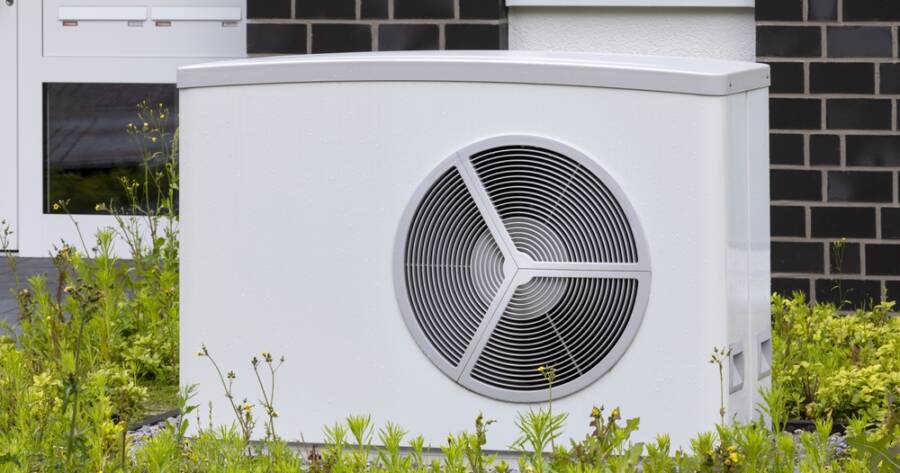Air heat pumps are gaining popularity as an effective, eco-friendly heating solution. Many homeowners with older buildings are looking for efficient ways to warm their homes without relying on traditional heating systems. Air heat pumps could be the ideal answer. These systems offer energy savings and can reduce environmental impact, making them an appealing option for people who want to update their home heating without extensive renovations.
How Do Heat Pumps Work?
Air heat pumps work by extracting heat from the outside air and transferring it into the home. In colder months, even when outside temperatures are low, heat pumps can capture available heat and bring it indoors. This process uses a compressor and refrigerant to absorb and release heat, providing a comfortable indoor temperature without consuming large amounts of energy.
Unlike traditional heating systems that create heat through burning fuel or electric resistance, heat pumps only move heat, making them more efficient. Many heat pumps can reverse their function to provide cooling during the summer, offering year-round comfort. This dual-purpose system could benefit owners of older buildings who are looking for modern, energy-saving solutions.
Why Air Heat Pumps Are a Smart Fit for Old Buildings
Older buildings often have challenges with insulation, ventilation, and energy efficiency, making heating and cooling expensive and difficult. Installing air heat pumps can improve energy efficiency and reduce heating costs in these buildings. Because they don’t require large-scale renovations, heat pumps can be an excellent option for preserving the character of older homes without major construction.
Traditional heating systems in older buildings, like boilers or radiators, may be less efficient and costly to maintain. Heat pumps, however, require only a minimal amount of electricity to function, often resulting in lower energy bills. Since heat pumps don’t require ductwork or major structural changes, they can be integrated into old buildings relatively easily, offering a cost-effective and sustainable alternative.
Potential Cost Savings with Heat Pumps
Switching to an air heat pump system might save homeowners money on energy bills. Although the initial cost of installing a heat pump can be high, these systems tend to pay for themselves over time through lower operating costs. Many homeowners find that the reduced energy use leads to noticeable savings, especially during colder months when heating needs increase.
In addition to monthly savings, heat pumps may also reduce maintenance costs. Older heating systems often need regular servicing to stay efficient, but heat pumps are generally low-maintenance. Routine checks and occasional servicing are usually all that’s needed to keep them running smoothly. Over time, the combination of energy savings and low maintenance could make heat pumps a practical investment for people looking to modernize their heating.
Environmental Benefits of Using Air Heat Pumps
For eco-conscious homeowners, air heat pumps present an appealing option. Traditional heating systems often rely on fossil fuels, which contribute to greenhouse gas emissions. In contrast, heat pumps use electricity to transfer heat, producing less carbon dioxide and reducing environmental impact. As renewable energy sources like solar and wind power become more common, heat pumps can be powered with cleaner energy, further decreasing their carbon footprint.
Many older buildings can also benefit from heat pumps because these systems don’t require the same level of insulation as traditional heating methods. While good insulation is always helpful, heat pumps can still function effectively in less insulated homes, making them accessible to a wider range of buildings. By choosing heat pumps, homeowners can contribute to lower carbon emissions and support the shift toward sustainable energy practices.
Installing Heat Pumps in Older Homes: Key Considerations
While heat pumps offer numerous benefits, there are factors to consider before installation in older homes. First, it’s essential to assess whether the building’s electrical system can handle the power needs of a heat pump. Some older buildings may require electrical upgrades to support this type of heating system. Fortunately, these upgrades can often be completed without extensive construction, but they should be factored into the installation cost.
Next, it’s wise to consider the best placement for a heat pump system. Outdoor units need sufficient airflow, so placing them in a location with good ventilation is critical. For indoor units, choosing an area that optimizes heat distribution throughout the home will improve efficiency and comfort. Consulting with an experienced installer familiar with older buildings can help in making the best choices for heat pump placement and system size.
Is a Heat Pump Right for Your Older Building?
Air heat pumps could offer a simple, energy-efficient solution for those looking to update heating systems in older buildings. By installing a heat pump, homeowners can save on energy costs, reduce environmental impact, and avoid extensive renovations. Although the initial setup may require some investment and planning, the long-term benefits make heat pumps a worthwhile consideration for any older home.
Switching to a heat pump could be a step toward a more sustainable and comfortable future, especially as energy costs continue to rise. With proper installation and occasional maintenance, a heat pump system might provide years of efficient, reliable heating for older buildings, making it a smart choice for homeowners who want to combine modern comfort with classic architecture.
